Trying to identify the hummingbird zipping around your yard?
Hummingbirds are some of the most fascinating creatures that you can find in your backyard. It really helps to know what species of hummingbirds live in Alabama.
While the list below contains all the usual hummingbirds found in Alabama, it’s possible to find a vagrant species of hummingbird that’s not native to Alabama. This is rare but not unheard of.
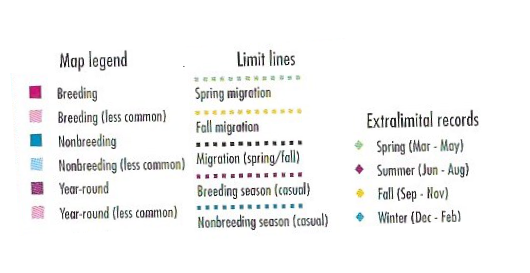
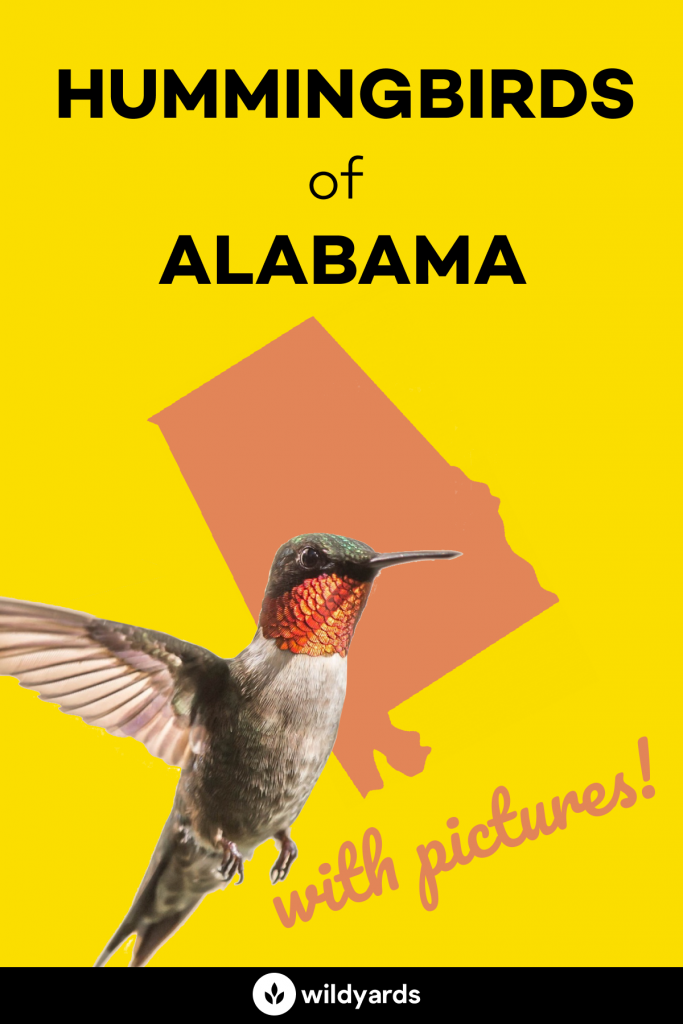
All 8 Beautiful Hummingbird Species of Alabama
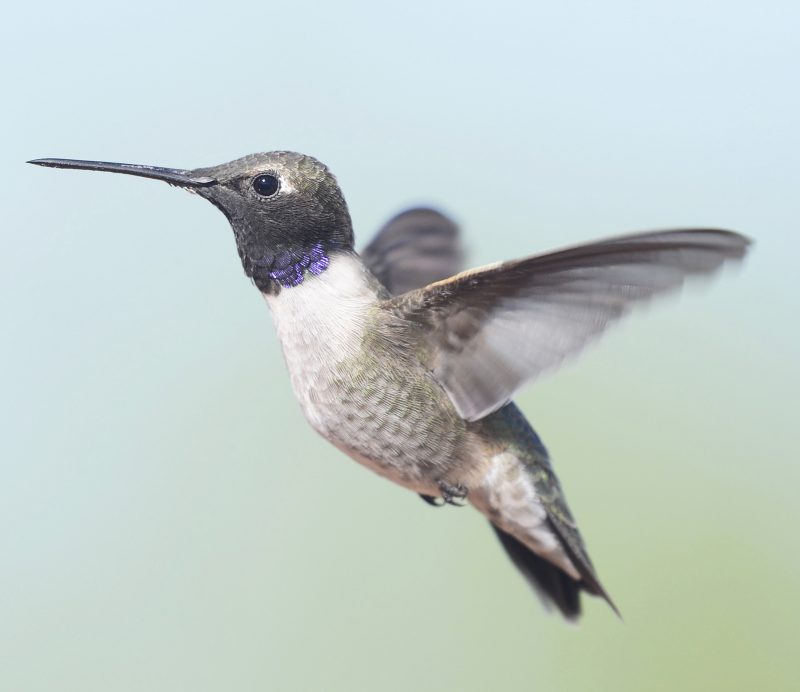
Black-Chinned Hummingbird
Archilochus alexandri
Order: Apodiformes
Family: Trochilidae
Size: 3.25 – 3.75 in (8.5 – 9.5cm)
Overview
The Black-Chinned Hummingbird is the western counterpart of the Ruby-Throated Hummingbird. The species was named in 1846 to honor its discoverer – Dr Alexandre. It can be found in most types of habitats, including backyards, all over the western United States. It pumps its tail almost constantly while in flight and isn’t picky about what plants it takes nectar from.
How to Identify
The Black-Chinned Hummingbird is a small hummingbird with a medium to long decurved bill and a grey crown. It’s gorget is mostly black with a hint of violet in the correct sunlight.
Black-Chinned Hummingbird Range & Migration Map
The small hummingbird breeds in most the western states, going as far east as eastern Texas. Can be found during the winter in the southern states bordering the Gulf of Mexico.
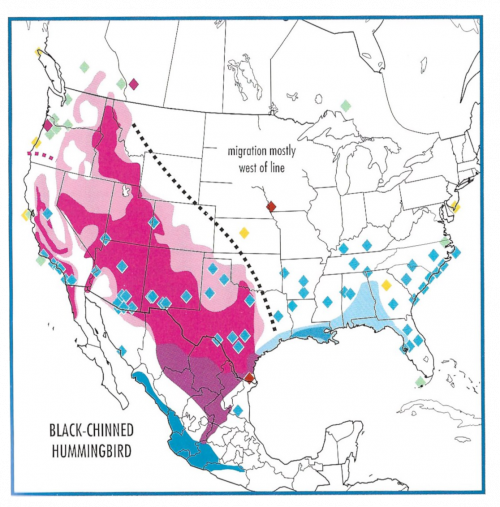
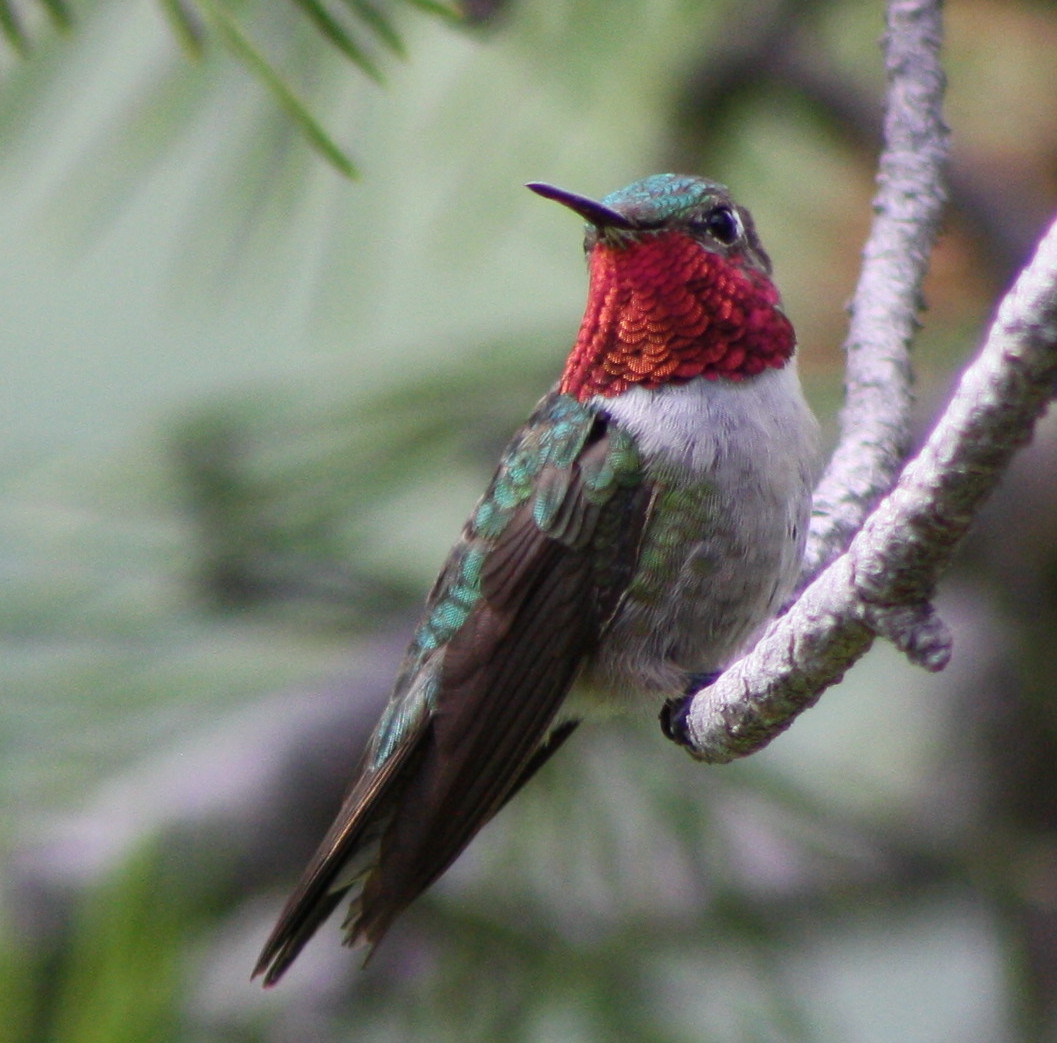
Broad-Tailed Hummingbird
Selasphorus platycercus
Order: Apodiformes
Family: Trochilidae
Size: 3.75 – 4in (9.5 – 11cm)
Overview
This medium-sized hummingbird is one of the most hummingbirds of the Rocky Mountains. Their call, which resembles the ringing of tiny bells, is a common sound during the Rocky Mountain summers. Fun fact, a female Broad-Tailed Hummingbird is the oldest known wild hummingbird in the United States reaching a ripe old age of 12 years.
How to Identify
The Broad-Tailed male hummingbird sports a hot pink gorget which contrasts with a white breast. It’s medium-sized with a a decently long tail and straight black bill. It’s a mild-manned hummingbird that is easily bullied by other hummingbirds.
Broad-Tailed Hummingbird Range & Migration Map
The Broad-Tailed Hummingbird breeds from Wyoming and central Idaho down to Mexico. Winters in Mexico and can rarely be found along the Gulf of Mexico states. It prefers mountain forests and woodlands.
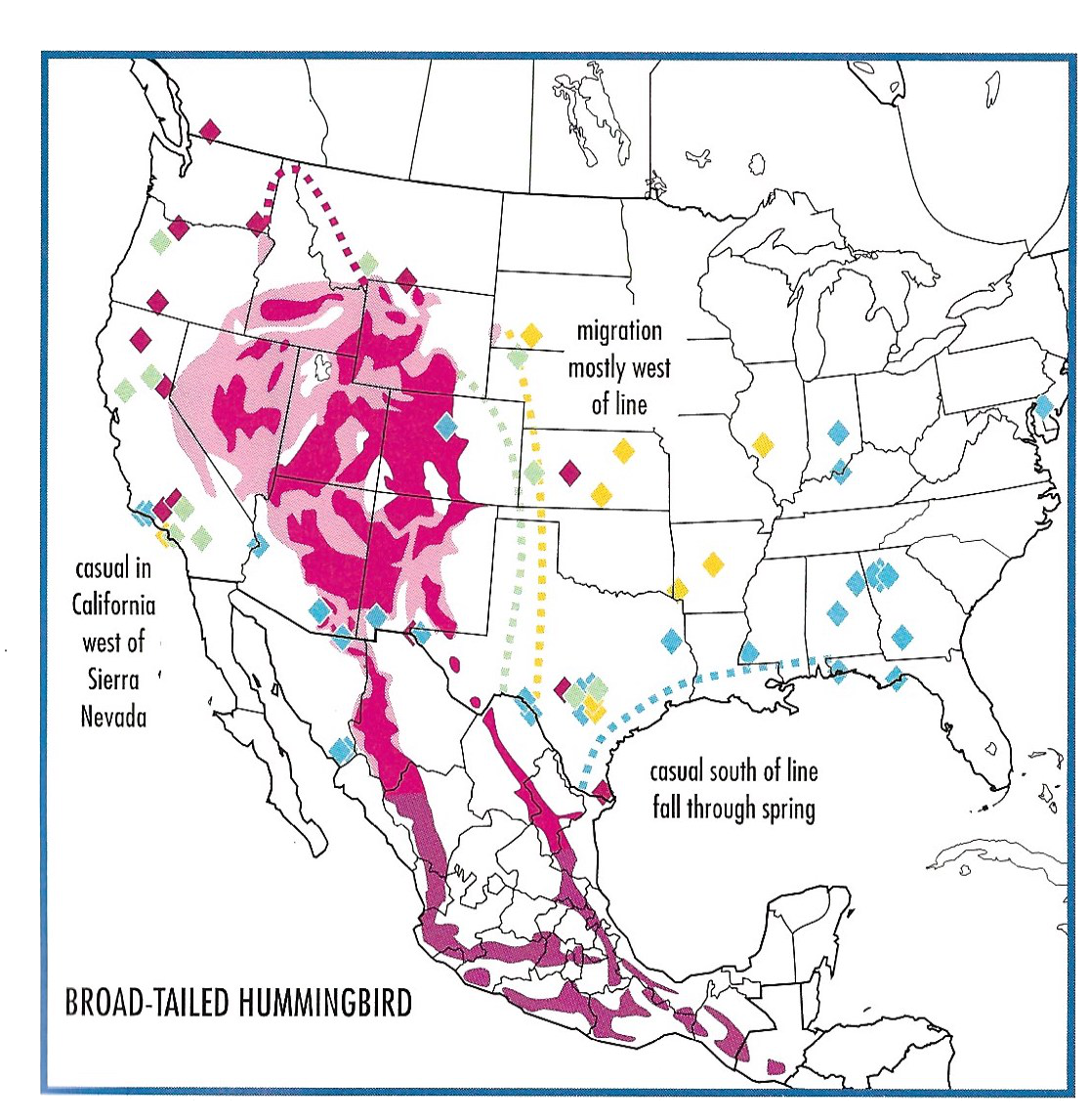
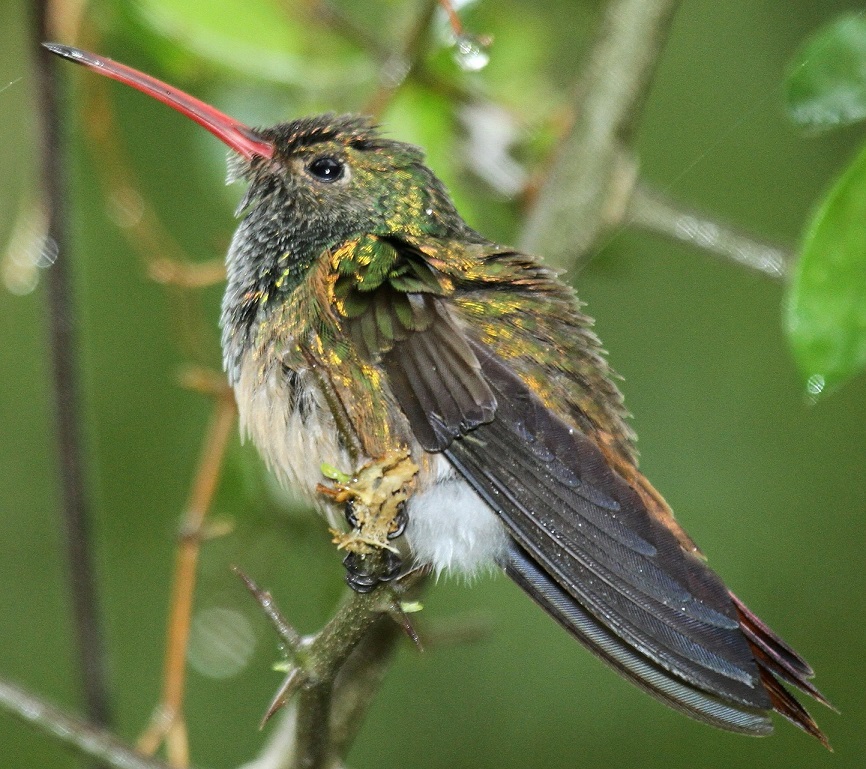
Buff-Bellied Hummingbird
Amazilia yucatanensis
Order: Apodiformes
Family: Trochilidae
Size: 3.9 – 4.3in (10 – 11cm)
Overview
The buff-bellied hummingbird tends to be a common sight down in Texas and along to Mexico, and there are thought to be around 100,000 in the US wild. Intriguingly, this is the only hummingbird species that chooses to drift northeast occasionally. They’re normally easy to spot in Texan forests that are particularly dry or arid.
How to Identify
This beautiful hummingbird is generally easy to spot thanks to its orange-tinted feathers and its bright red beak! As its name suggests, it has a buff or yellowish stomach, and you will normally be able to spot Buff-bellied eggs in nests from early spring to late summer. They generally choose to breed in southern Texas, so you may spot a handful in these yards and gardens.
Buff-Bellied Hummingbird Range & Migration Map
While the Buff-bellied hummingbird breeds in the Texan south, they live across the state and the central gulf. They tend to migrate up along the gulf coast at the end of the breeding season and have been spotted as far afield as western Florida when winter rolls around.
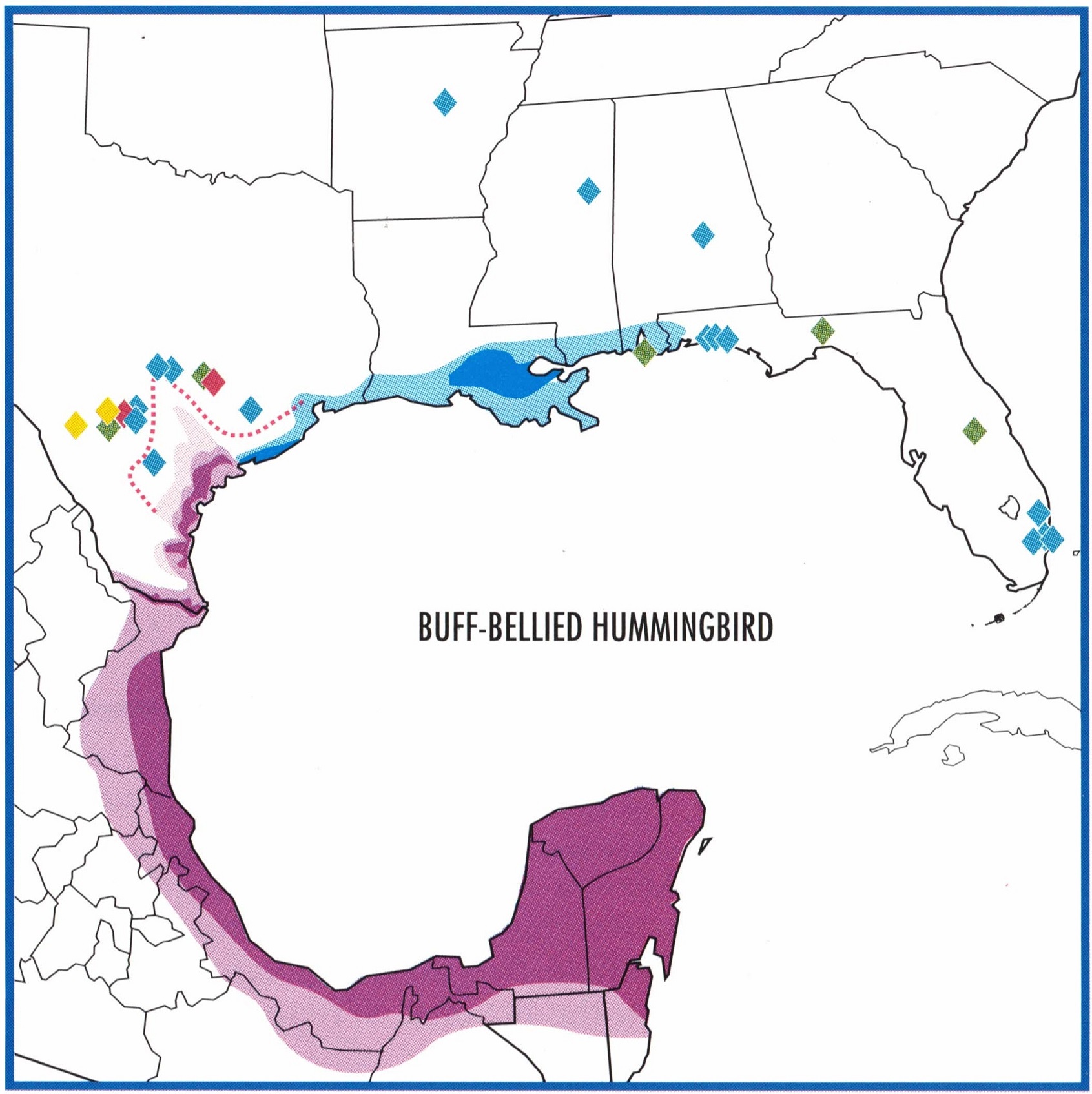
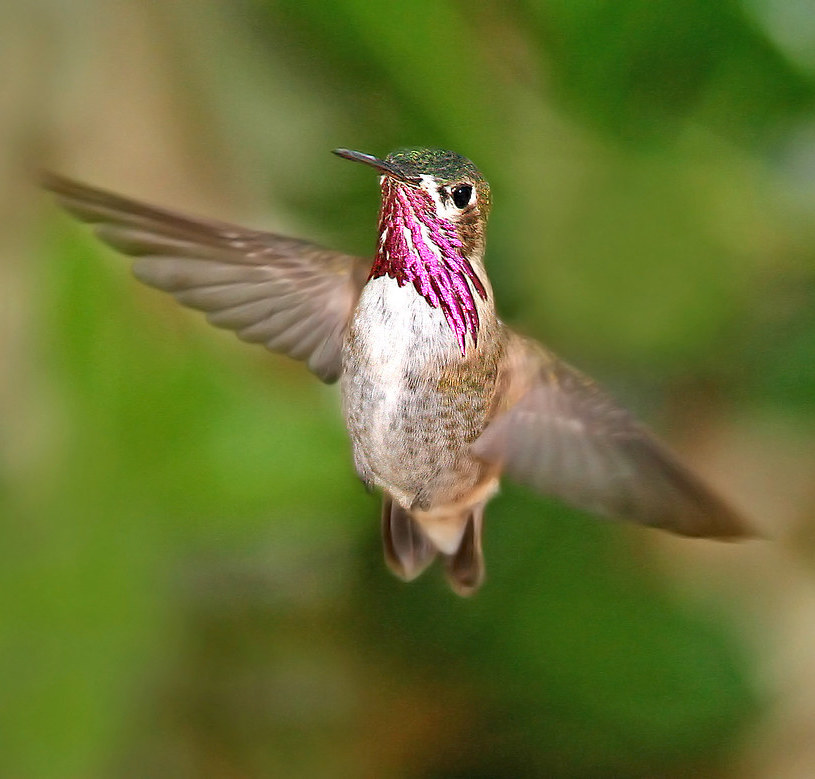
Calliope Hummingbird
Stellula calliope
Order: Apodiformes
Family: Trochilidae
Size: 2.75 – 3.25in (7.5 – 8cm)
Overview
The Calliope Hummingbird is the smallest breeding bird in the United States. In fact, the male weighs less than a penny. The Calliope’s species name is Greek for “beautiful voice” which is rather ironic given that this hummingbird has limited vocal ability. This hummingbird prefers habitats in conifer forests and older growth following forest fires.
How to Identify
The Calliope Hummingbird is a really small bird with a short black bill and short tail. The male sports a red to purple gorget with a white background. It’s very small size should distinguish it from other hummingbirds rather easily.
Calliope Hummingbird Range & Migration Map
The Calliope Hummingbird breeds in the northwestern states starting from northern California. During the winters, it can be found in the states along the Gulf of Mexico. During migration season, they can be found following both the Rocky Mountain and Pacific ranges.
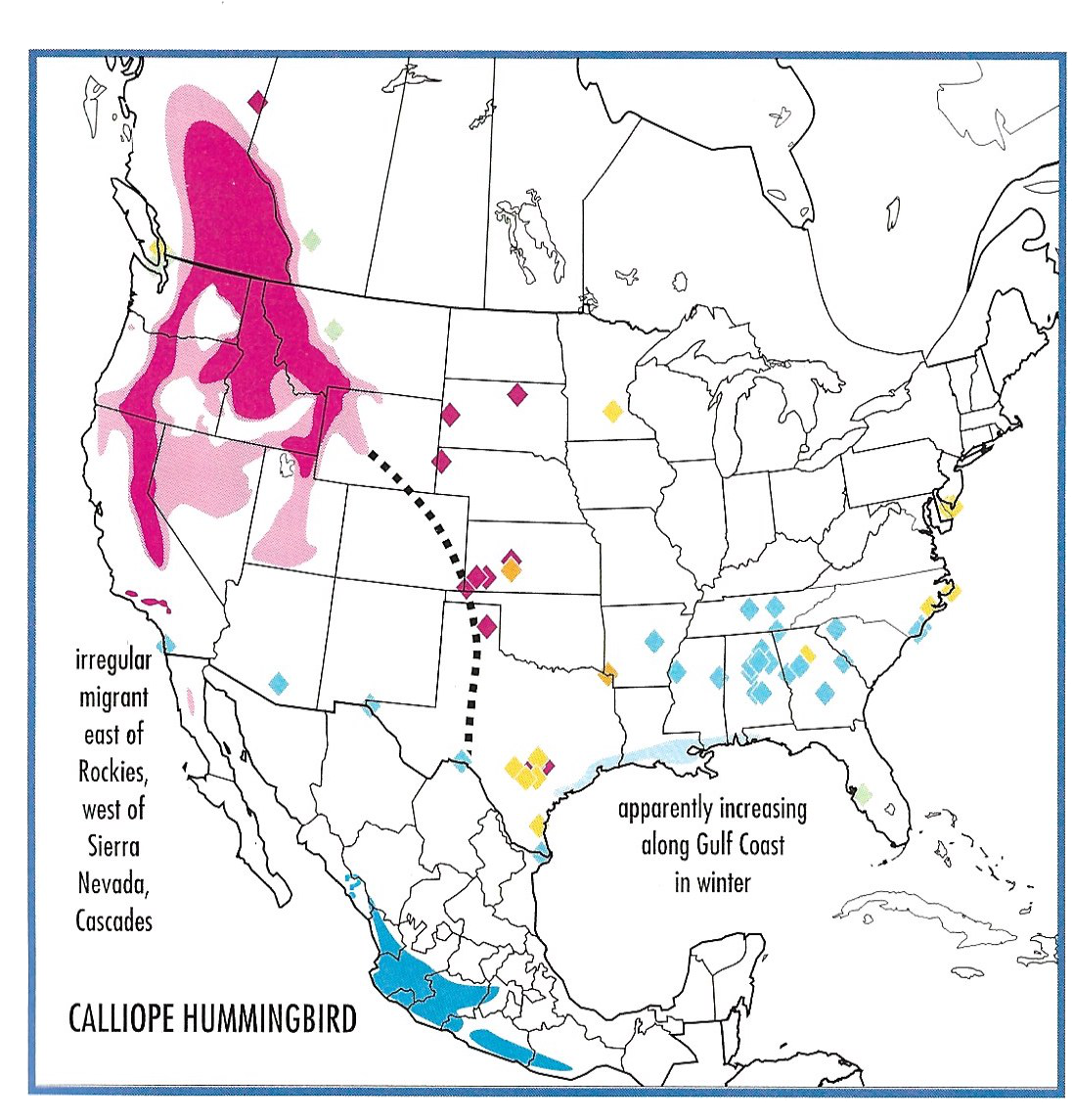
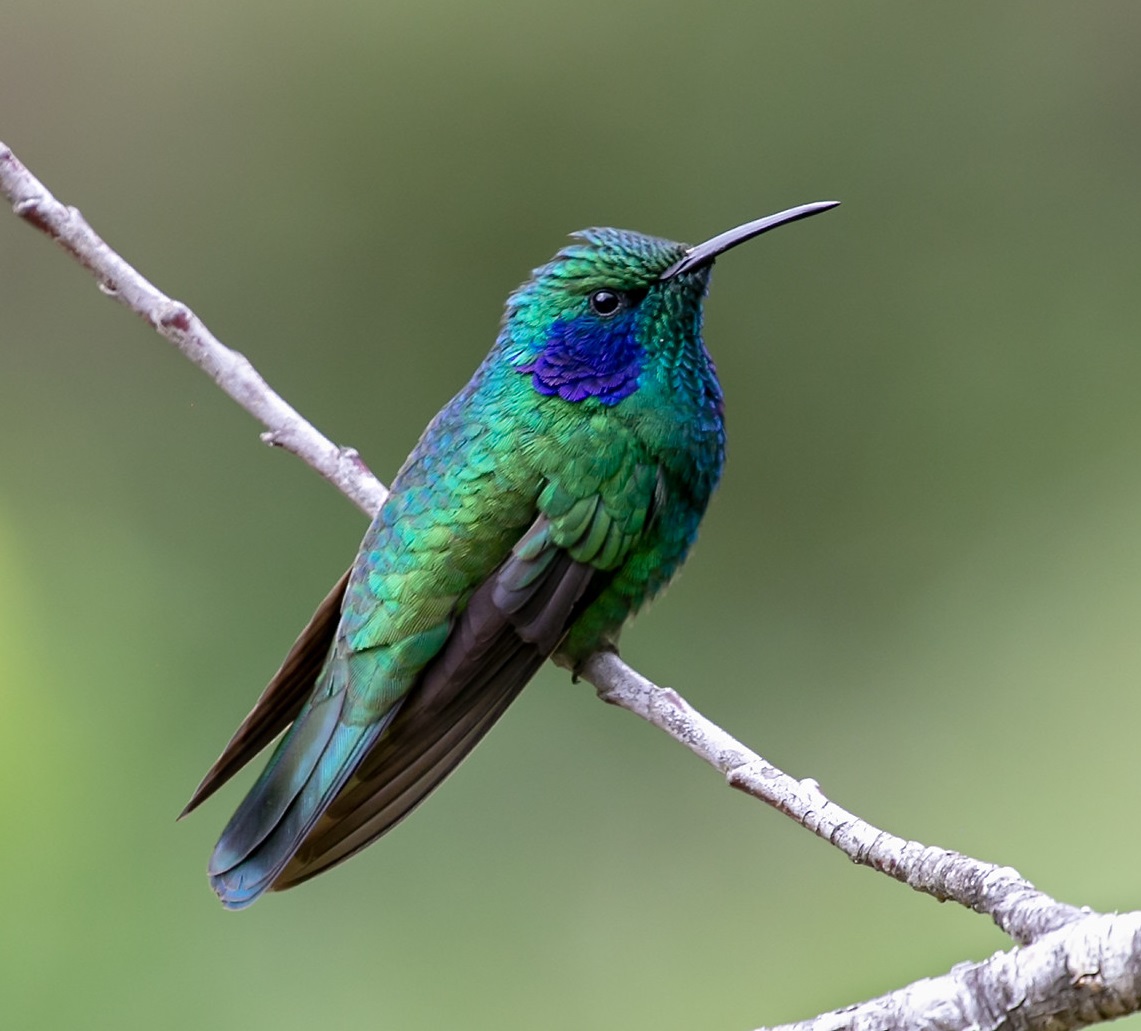
Green-Violet Ear Hummingbird
Colibri thalassinus
Order: Apodiformes
Family: Trochilidae
Size: (9.7 – 12cm)
Overview
Otherwise known as the Mexican violet ear, this hummingbird is a vagrant species that frequent southern states via Mexico. It’s regarded as something of a nomad, and they tend to prefer forest clearings to breed in. They are some of the most striking hummingbird species traveling in this direction – though they are known to be quite aggressive, and will chase other species off a feeder.
How to Identify
This hummingbird has a stunning array of green plumes and purple patches to the ears, with a dark pair of wings and a blue-tinted tail. Telling the difference between males and females can be difficult, however, males are thought to be a little more striking or bold in color.
Green-Violet Ear Hummingbird Range & Migration Map
The green violet ear is a born wanderer, with more than 30 different records indicating visitations to eastern Texas in the past 60 years. However, it’s also been spotted traveling from Mexico and Central America as far and as wide as Alabama, Arkansas, California, Colorado, Kentucky, Louisiana, Michigan, Mississippi, Montana, North Carolina, Ohio, Oklahoma, and Wisconsin.
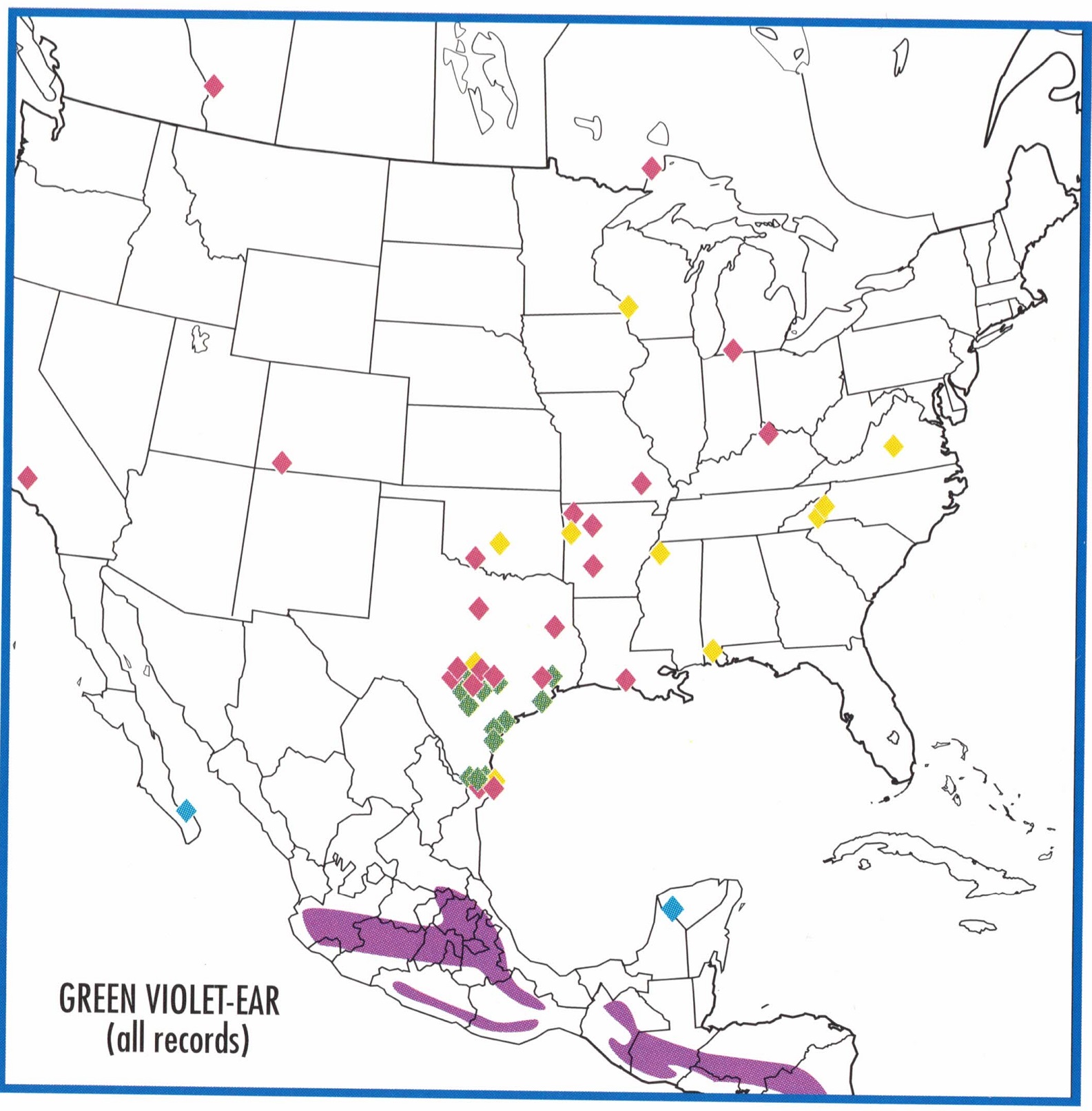
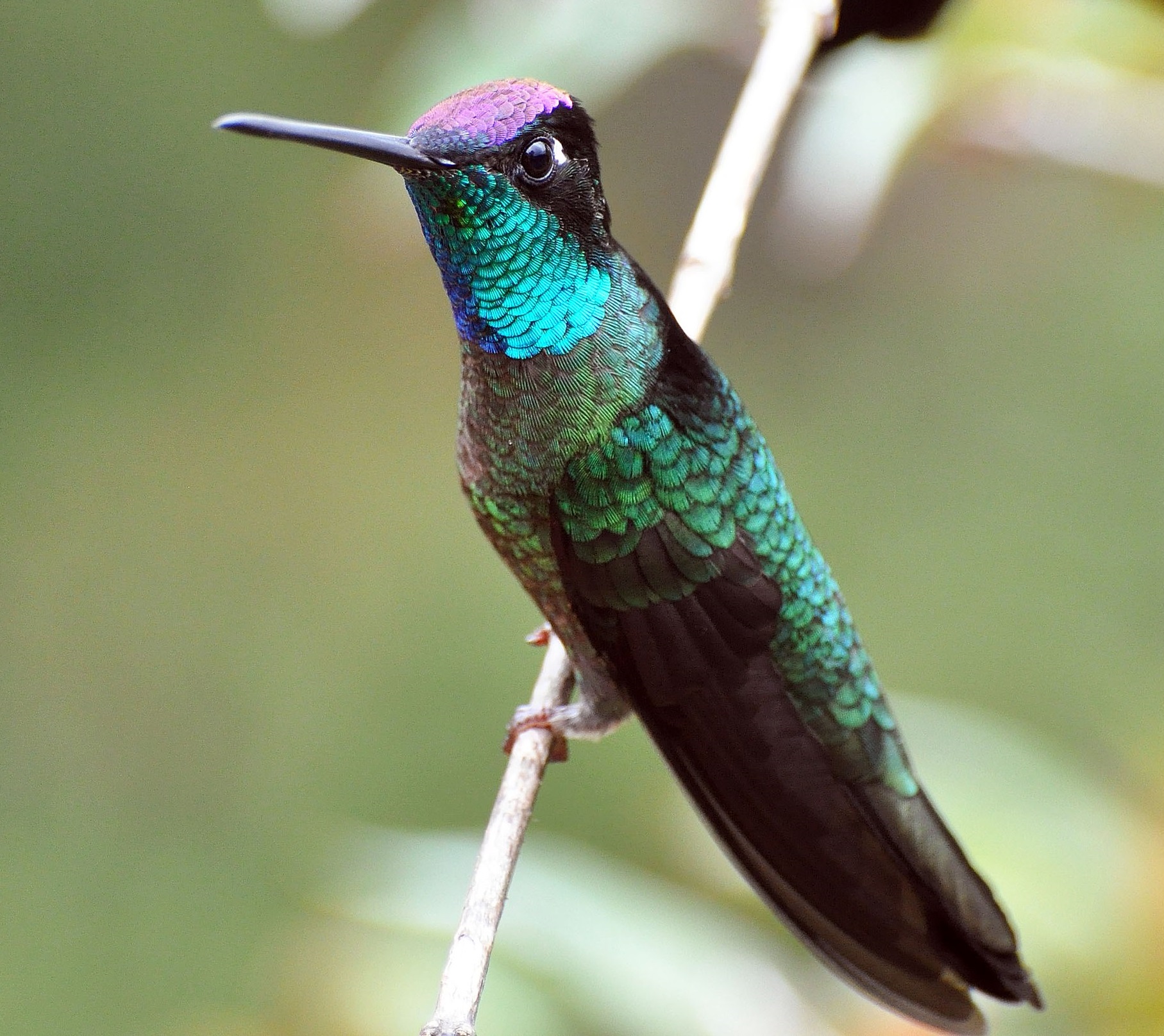
Rivoli’s Hummingbird
Eugenes fulgens
Order: Apodiformes
Family: Trochilidae
Size: 4.3 – 5.5in (11 – 14cm)
Overview
Like Anna’s hummingbird, Rivoli’s hummingbird is also named after a member of the Rivoli – specifically, the Duke of Rivoli, Anna’s husband. This species used to be called the Magnificent Hummingbird, but was recently renamed to distinguish itself from another species that has a blue gorget as opposed to the purple one that Rivoli’s hummingbird has. This particular avian is well-loved for its stunning colors in green and purple, and for its long body! It has one of the longest bills in the hummingbird species, and its heart rate can reach a blistering pace of 1,200 bpm!
How to Identify
Rivoli’s hummingbirds are wildly colored in waves of green, blue and purple, with touches of yellow. They are fairly large as hummingbird species go, and they are easy to spot as they have quite long, tall statures compared to others that are native in the US!
Rivoli’s Hummingbird Range & Migration Map
Rivoli’s hummingbirds breed primarily in the mountain ranges of western Texas, southeastern Arizona, and south-central New Mexico. The males are highly nomadic and banded birds have traveled hundreds of miles in a season. Sightings of this species can be seen in Colorado (May to October), Alabama (September to February), Arkansas (July), California (April), Georgia (winter), Minnesota (July), Nevada (June), Utah (July), Wyoming (June to July).
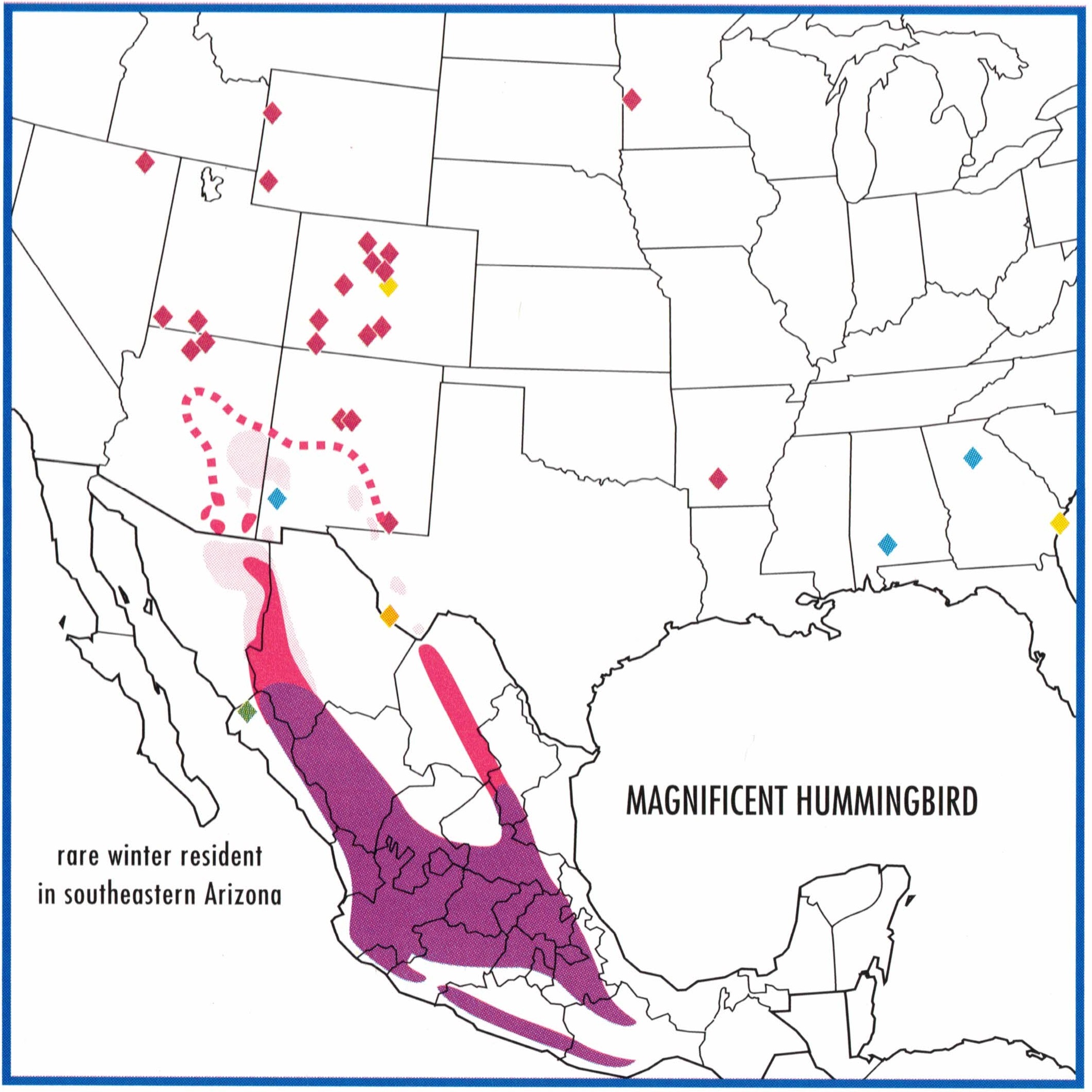
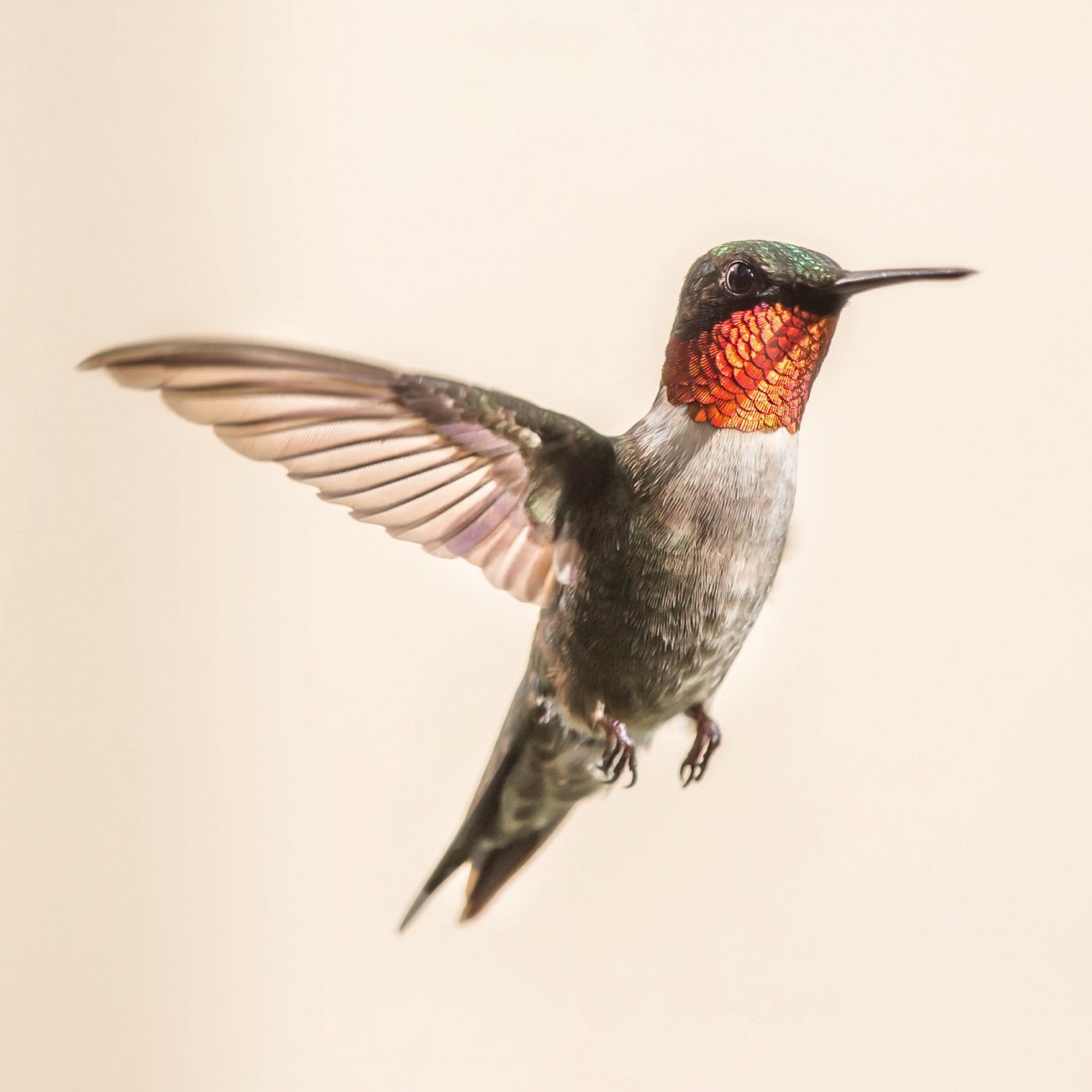
Ruby-Throated Hummingbird
Archilochus colubris
Order: Apodiformes
Family: Trochilidae
Size: 3.25 – 3.75 in (8.5 – 9.5cm)
Overview
The ruby-throated hummingbird is one of the most commonly found hummingbirds of the United States. In fact, it’s the only one that breeds east of the Mississippi River. To reach these eastern breeding grounds, the Ruby-Throated Hummingbird takes a perilous route of flying over 500 miles non-stop over the Gulf of Mexico.
How to Identify
This hummingbird is on the smaller side. The male sports a handsome scarlet gorget and a black chin strap which distinguishes it from the Anna’s and Broad-Tailed hummingbirds.
Ruby-Throated Hummingbird Range & Migration Map
The Ruby-Throated hummingbird breeds in eastern United States and prefers hardwood, pine and mixed forests starting in the spring and retreats to Mexico in the winter.
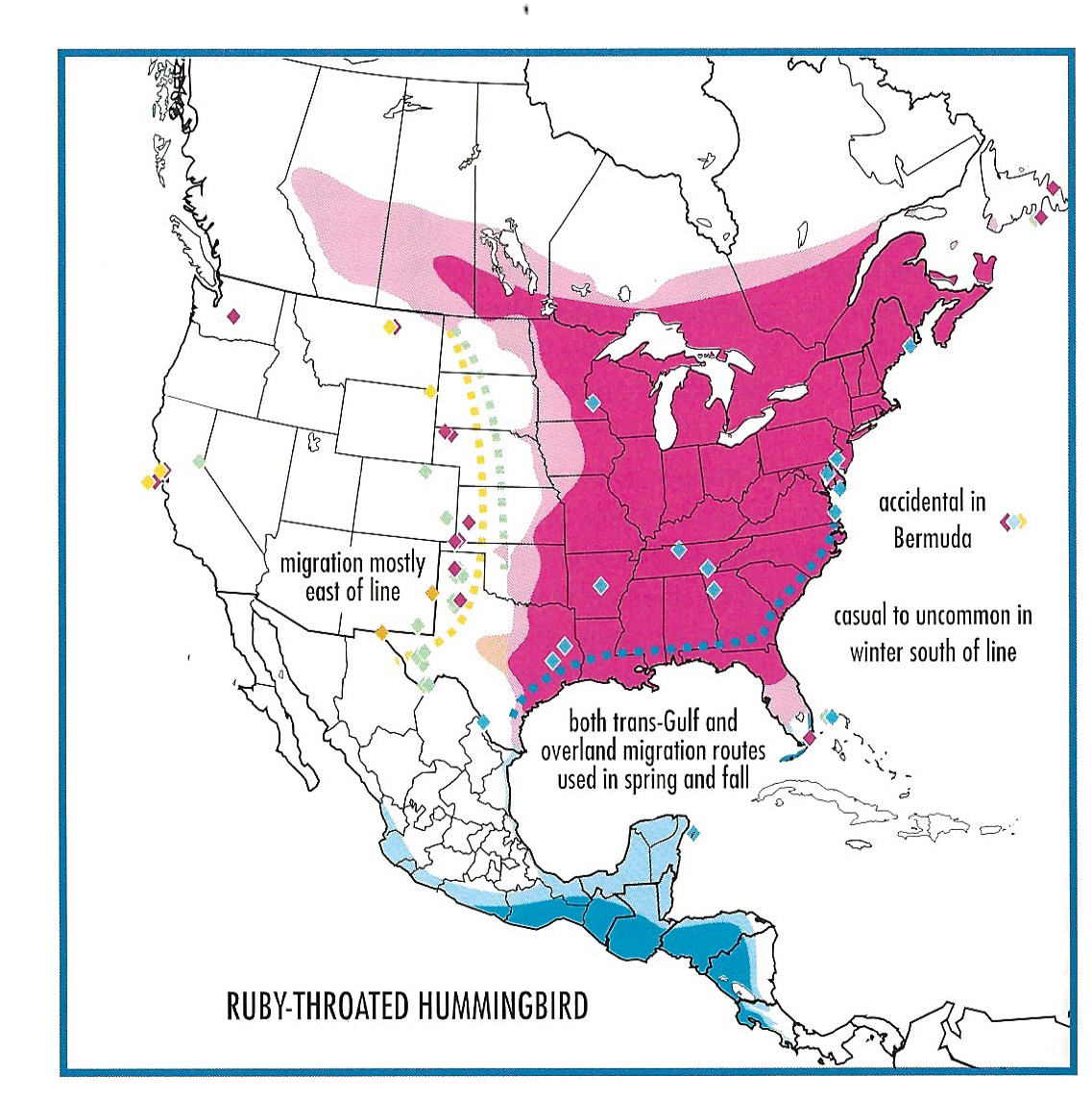
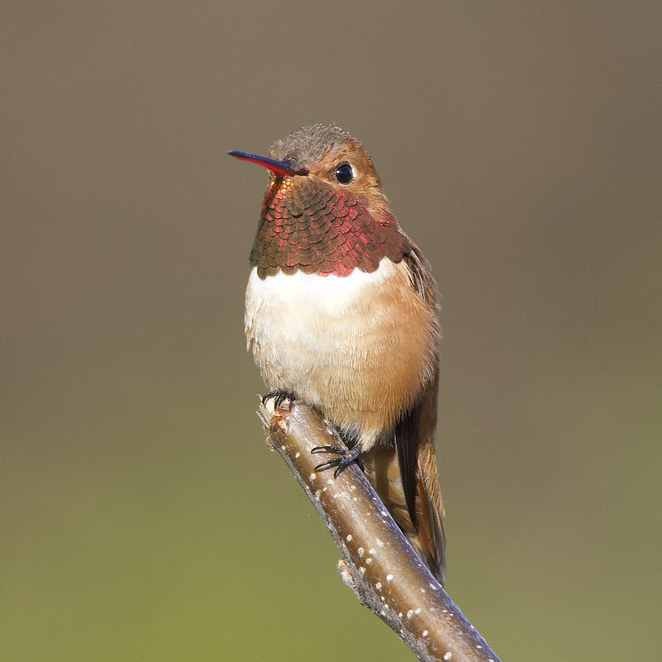
Rufous Hummingbird
Selasphorus rufus
Order: Apodiformes
Family: Trochilidae
Size: 3.5 – 4in (9 – 10cm)
Overview
The Rufous Hummingbird breeds farther north than any other hummingbird in the United States. It’s an aggressive species which makes it an unwelcome guest among hummingbird feeders. This hummingbird is an important part of the Pacific Northwest ecosystem, acting as a pollinator where the insects are at a disadvantage due to their cold-bloodedness.
How to Identify
The most distinguishing feature of the Rufous Hummingbird is the male’s rufous gorget that’s hard to miss. It’s a relatively small hummingbird with a short black bill. With the rufous plumage and aggressive behaviour, you’ll have no problem identifying male Rufous Hummingbirds.
Rufous Hummingbird Range & Migration Map
The Rufous Hummingbird breeds from the southeastern tip of Alaska down to the northern most parts of California, going as far east as Montana. During the winter, it migrates down to the Gulf of Mexico states.
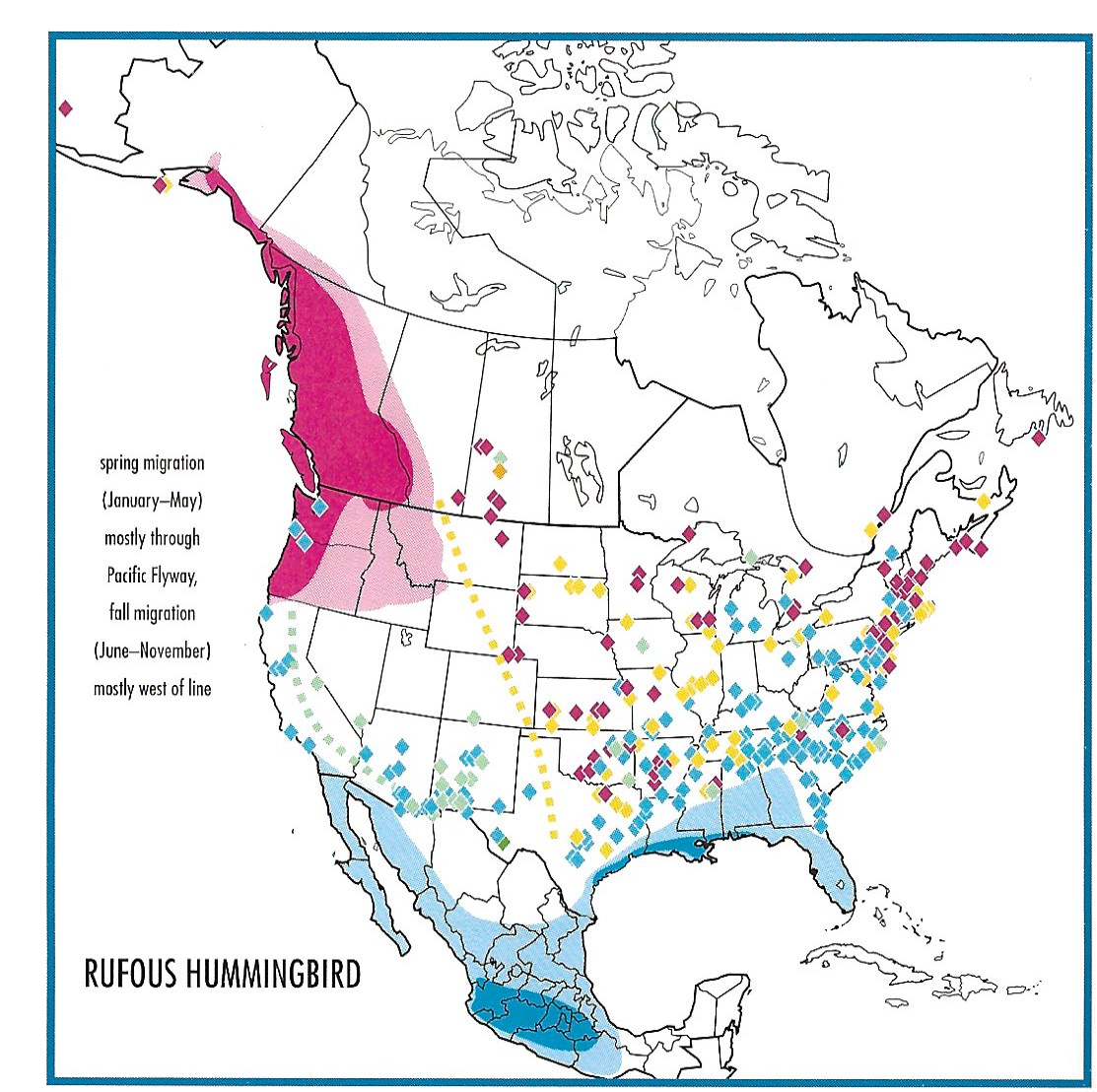
How to Attract Alabama Hummingbirds to Your Yard
Want to see more hummingbirds in your backyard?
We have all the information you need on our site to help you do that. First, we recommend you read our guide on how to attract hummingbirds to your yard. That’ll give you the basics of what’s required to attract hummingbirds.
Then, we’d recommend reading our buyer’s guide on choosing the best hummingbird feeder. Setting up a hummingbird feeder or two is the best way to guarantee that hummingbirds will visit your yard.
There are a bunch of other ways to attract hummingbirds such as getting a bird bath and planting native flowers that attract hummingbirds.
All State Hummingbirds
Want to see what hummingbirds species are found in other states? Here’s our complete list of hummingbirds found in each state:

Hey Robert, We have been watching the Ruby for years out of our windows. We have a feeder and water oak where they nest and perch. There has been a large female (not much color) perching along with the Ruby. She chases the Ruby when they try to feed. She has some greenish on her back, white down her wings, white spots on the tips of the tail and some white going on on the gorget. I have a photo that doesn’t tell us much. Can you suggest a type? Thanks, Gary
P.S.: Alabama 40 miles north of Gulf.